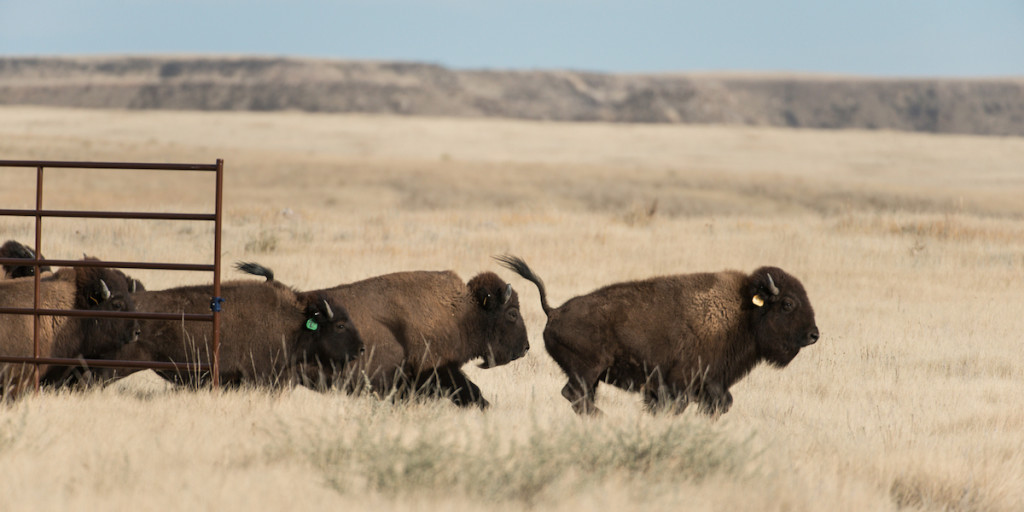
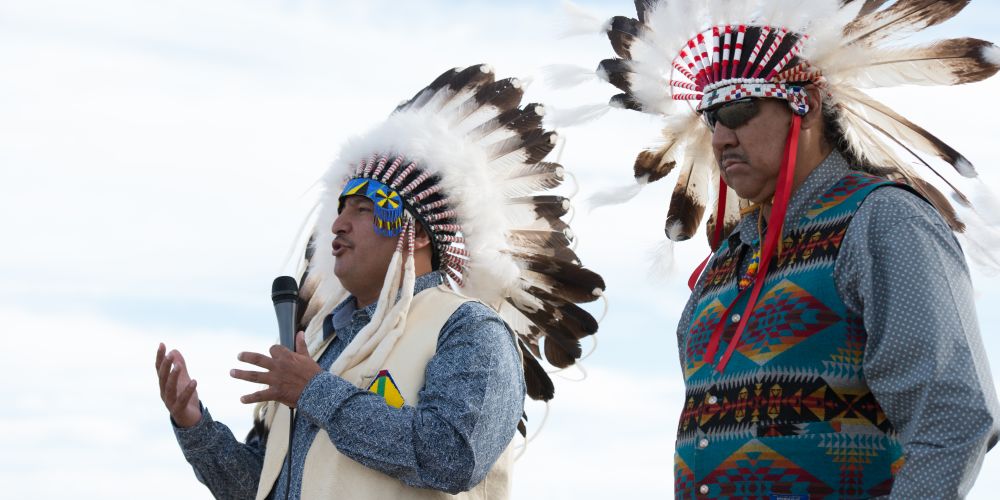
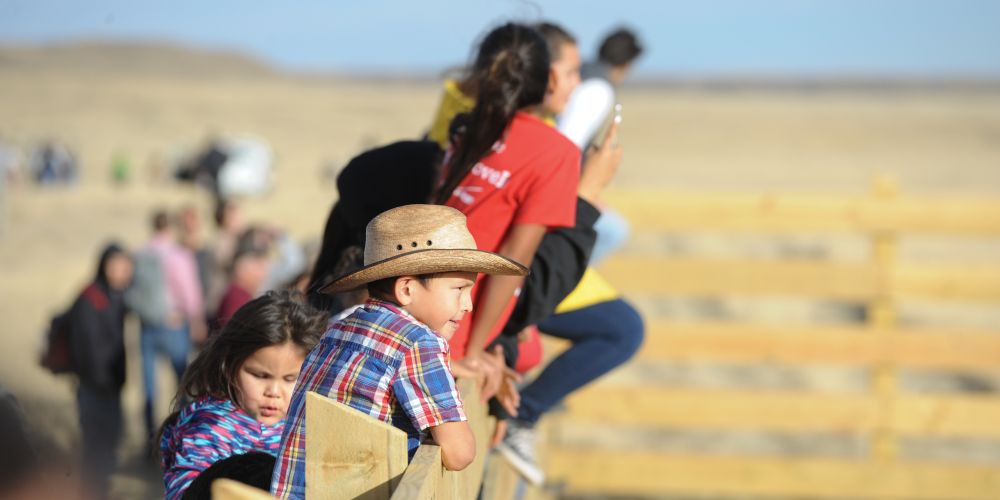
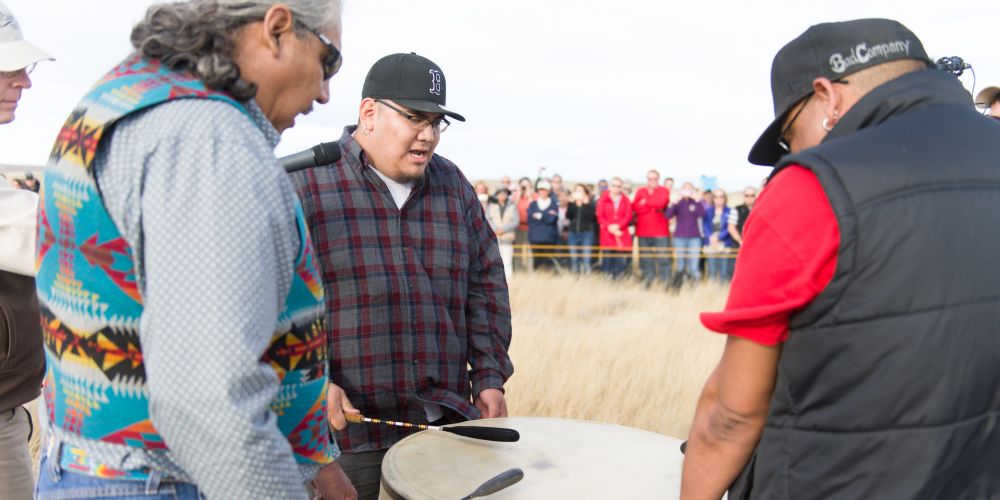
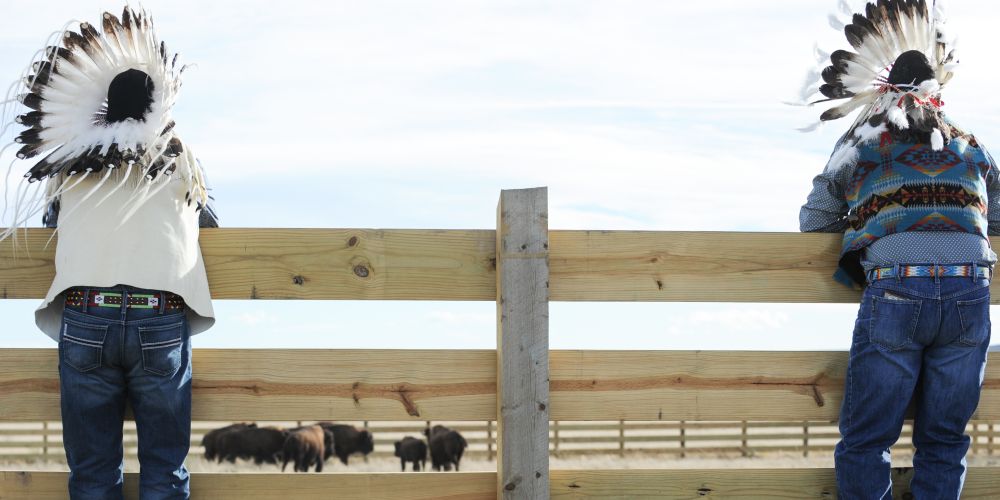
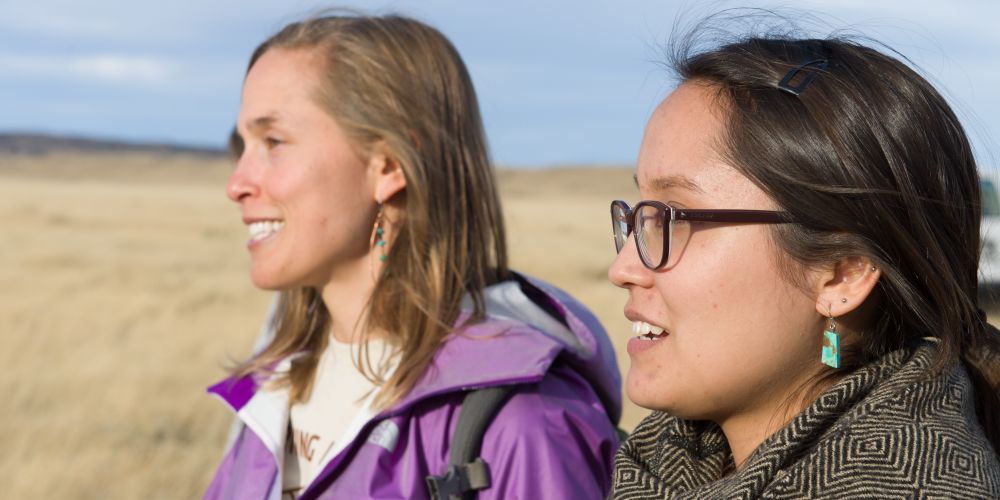

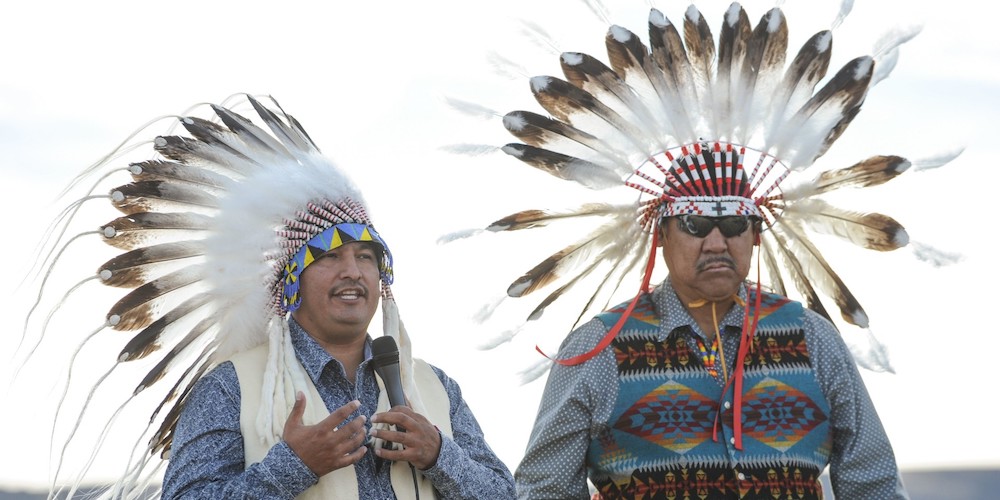
SOAPSTONE PRAIRIE NATURAL AREA – Modern science and ancient ritual combined Sunday as a herd of 10 American bison thundered from a holding corral onto the northern Colorado prairie, the first step to restoring the nation’s largest iconic land mammal to this part of its historic range.
It was the first time in nearly 150 years that bison with complete heirloom genetics – from in and around Yellowstone National Park – had touched public grasslands near the Wyoming border north of Fort Collins.
About 350 community members and project partners gathered to watch the Laramie Foothills Bison Conservation Herd charge onto 1,000 fenced acres at Soapstone Prairie Natural Area and Red Mountain Open Space.
Before the release, a spiritual leader from the Crow Nation of Montana offered a prayer in his native Apsaalooké language, as the golden eagle feathers in his headdress waved in the prairie wind. Four Native American guests then drummed and sang a Pawnee going-home song.
“I want to wish the buffalo well going back to their homelands,” drummer Dwayne Iron told those assembled.
Bringing bison back
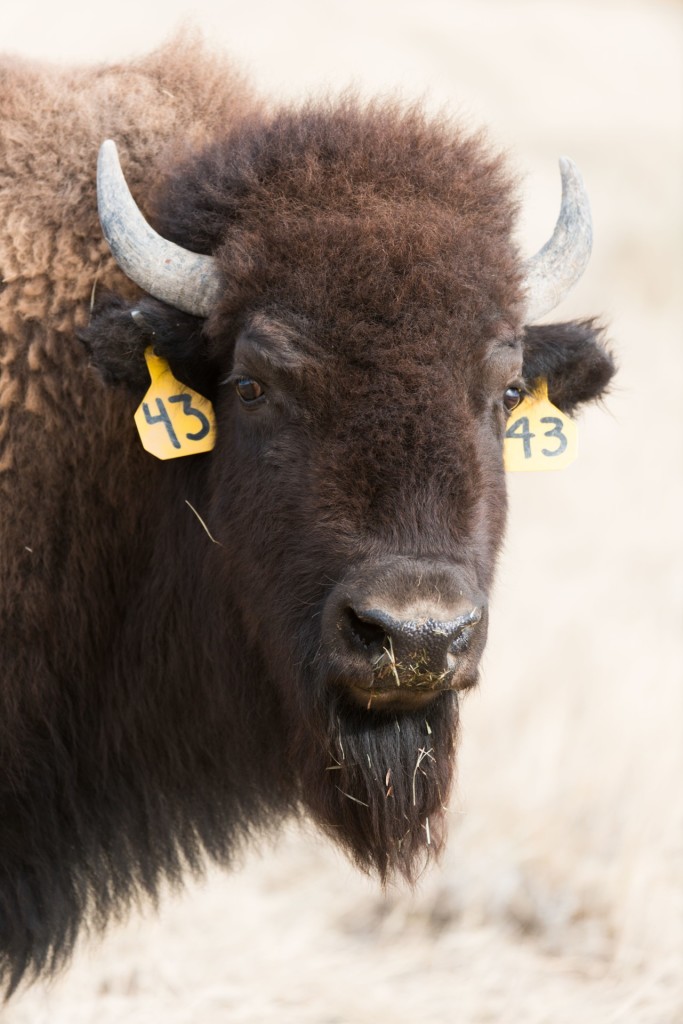
Modern fertility science, supplied by Colorado State University reproduction experts, is helping enable the homecoming, in part by coupling Yellowstone bison in the laboratory and cleansing reproductive cells and embryos of the infectious disease brucellosis.
“It’s a bit indescribable, the feeling you get from seeing the excitement of the animals and the way they ran out of the gate and took off running across the prairie,” Jennifer Barfield, the project’s lead reproduction scientist, said moments after the bison were released. “I’m just filled with pride for the team and what’s been accomplished here.”
Barfield has used assisted reproductive technologies, including in vitro fertilization, artificial insemination and embryo transfer, to achieve bison pregnancies and offspring with complete Yellowstone bloodlines. To these fertility techniques, she has added high-tech washing – special baths for sperm cells and embryos – to get rid of bacteria that cause brucellosis.
The problematic disease is endemic to Yellowstone; it triggers abortion and premature births in bison, elk and cattle. Brucellosis can also infect people, causing severe bouts of fever. For these reasons, reintroducing bison with Yellowstone bloodlines to other parts of the country has been difficult or impossible.
Reproduction science has provided a workaround to the vexing problem of brucellosis, while also introducing original and diverse bison genetics that could help many other bison conservation efforts nationwide.
Novel approach to conservation
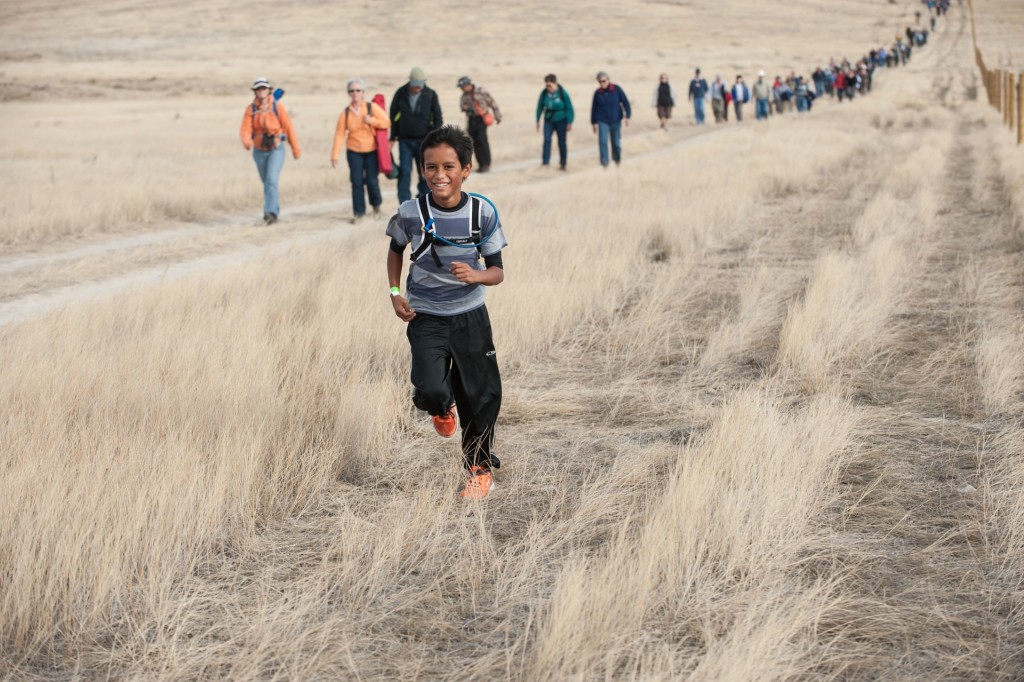
Release of the Laramie Foothills Bison Conservation Herd marks perhaps the first time assisted reproductive technologies have been used in the service of wildlife conservation, said Dr. Jack Rhyan, a veterinarian with the United States Department of Agriculture / Animal and Plant Health Inspection Service. Rhyan is leader of the agency’s Wildlife/Livestock Disease Investigations Team, which supplied some of the first brucellosis-free bison to form the Laramie Foothills Bison Conservation Herd.
The City of Fort Collins Natural Areas and Larimer County Natural Resources are providing habitat that is the essential first step for any wildlife conservation effort. At a celebration on the CSU Foothills Campus before the bison release, city and county leaders praised interagency collaboration for bringing bison back.
They also commended northern Colorado voters, who have supported taxes that allow purchase of public open space, including the sweeping grasslands about 25 miles north of Fort Collins.
The local government agencies have been part of a concerted effort, using land purchases and conservation easements, to preserve nearly a quarter-million acres of land stretching from northern Colorado’s Rocky Mountain foothills to the plains, said Meegan Flenniken, Larimer County resource program manager.
Restoring unity on the prairie
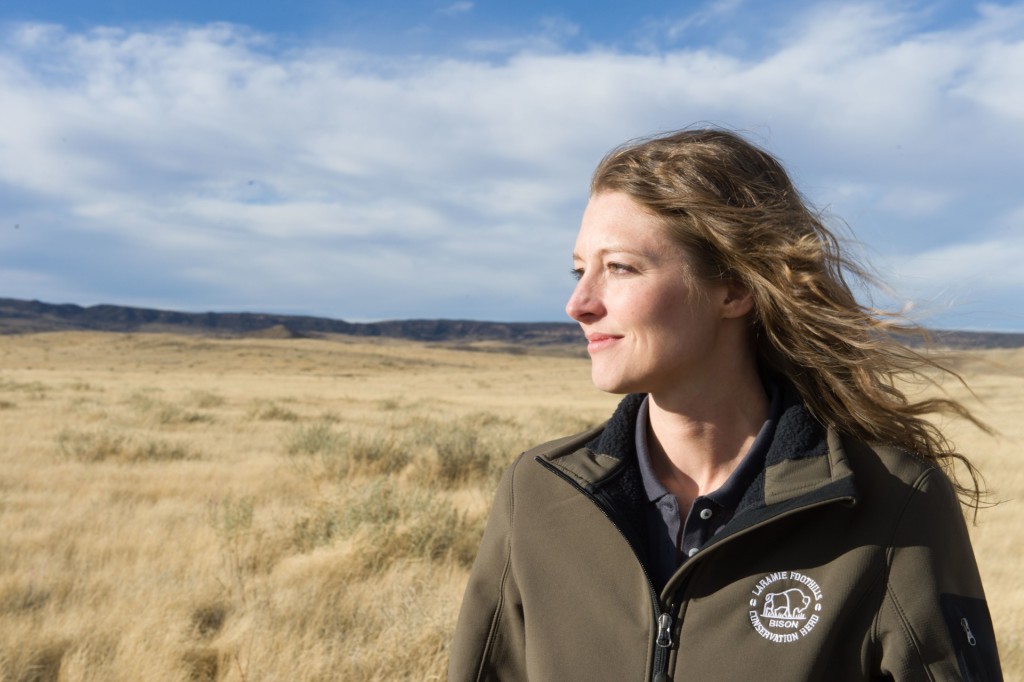
Just a year ago, the City of Fort Collins re-introduced black-footed ferrets to Soapstone Prairie Natural Area. These wildlife conservation efforts are part of a broad vision to return local public lands to a wild state, benefitting the ecosystem and visitor experiences, said Justin Scharton, environmental planner with Fort Collins Natural Areas.
And it was clear Sunday that the restoration of bishée, the Apsaalooké word for “bison,” is returning more than wildlife to the prairie. The project is restoring a sense of unity for Native people whose cultures and religions are intertwined with the shaggy, imposing creatures that once numbered in the millions and dominated the plains.
“This animal is revered, and it’s praised. It would bring life, and it got us to tomorrow,” said Ernest House Jr., executive director for the Colorado Commission of Indian Affairs and a member of the Ute Mountain Ute tribe.
“Bringing these majestic animals back fills a void for a lot of Native American cultures,” House said, speaking at the pre-release celebration on Foothills Campus. “It’s with that in my mind that I know today is a good day. I feel good, and I know our ancestors feel good for what’s going on today.”
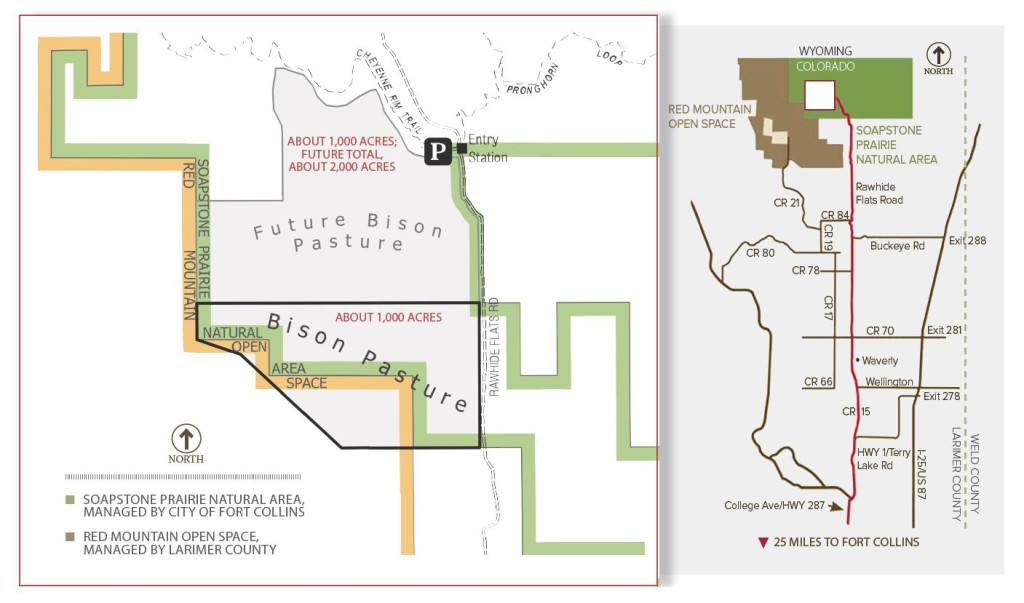
Learn More About The Bison Herd
Media Assets
Photo
Click photos in story to enlarge. Credit photographer named in photo captions above
Video